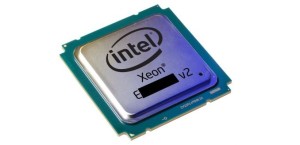 The writing is on the wall for Intel’s high-end Itanium chip, with the launch this week of the high-performance usurper, the chip maker’s 15-core Xeon E7 v2 chip.
The writing is on the wall for Intel’s high-end Itanium chip, with the launch this week of the high-performance usurper, the chip maker’s 15-core Xeon E7 v2 chip.
Intel’s Itanium is found mostly in Hewlett-Packard servers running the HP-UX, OpenVMS or Linux operating systems. But the Xeon E7 v2 chip, which is based on the x86 instruction set architecture, is slowly encroaching on the market occupied by Itanium, with Intel positioning it as a high-performance alternative that can run Windows and Linux.
With the E7 v2, Itanium is a step closer to meeting its eventual end, analysts said. The new Xeon E7 v2 chips have the throughput and performance to run in-memory applications, and also RAS (reliability, availability and serviceability) features, which were originally introduced in Itanium.
The features differentiating the once-powerful Itanium and x86 are dwindling, said Jim McGregor, principal analyst at Tirias Research.
“Itanium is in maintenance mode. You keep supporting because you contractually have to,” McGregor said. “It’s towards the end of its life.”
Hewlett-Packard is the only major customer for Itanium and has server contracts to fulfill. Intel also has to help customers port from the Itanium architecture to x86.
“It’s a slow and painful death,” McGregor said.
Intel’s most recent Itanium chip, code-named Poulson, was released in late 2012. The company’s next chip, code-named Kittson, is due for release in 2015, and that may be the last product in the line. The company has already scaled back its plans for Kittson, saying it would be made using the older 32-nanometer manufacturing process. The chip was originally going to be made using the latest 22-nm process.
Customers are better off in the long run making the switch to x86, which has taken over in servers and is competitive on performance, McGregor said.
Itanium’s death came into focus when Oracle determined in 2011 that the chip “was nearing the end of its life” and decided to stop supporting the architecture. The decision triggered HP to file a lawsuit against Oracle seeking damages and continued software support. Microsoft has also stopped software development for Itanium.
The investment in Itanium chips has declined and more money is being pumped into Xeon, said Patrick Moorhead, principal analyst at Moor Insights and Strategy.
“Oracle accelerated its decline by dropping support for it. The rate of innovation has slowed down immensely,” Moorhead said.
Itanium “should be considered dead,” with an exception being commitments Intel has to current customers, Moorhead said.
Itanium remains a critical part of Intel’s portfolio, said Patrick Buddenbaum, director of enterprise segment marketing at Intel.
“We continue to embrace this from a legacy perspective,” Buddenbaum said.
Intel will promote x86 and Xeon, but will continue to offer Itanium for customers running Unix-based systems and supported application stacks.
“Unix systems are not easy to move out of,” Buddenbaum said. “At this point it becomes a matter of choice.”
HP will continue to invest in Unix-based Integrity NonStop servers running on the Itanium chips, said Kate O’Neill, director of global marketing at HP’s Servers Group.
“We’re giving our customers choice,” O’Neill said.
But x86 servers are being adopted by more customers, she added.
HP earlier this week launched the Proliant DL580 Gen8 server with the latest Xeon E7 v2 chip. Xeon chips have also made it to some Integrity NonStop servers, which have traditionally been based on Itanium chips.
Itanium servers are important to HP’s mission-critical server strategy, especially for workloads based on the HP-UX and OpenVMS operating systems, O’Neill said.
“Equally we see customers who are looking at standardizing on x86 across their data center,” O’Neill said. “We have built in some scalability, resiliency features into our x86 line so customers can look at that … for demanding workloads.”





